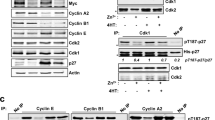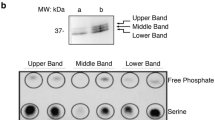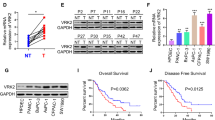Abstract
Recent work using virally transformed cells has shown that the viral gene product responsible for transformation is associated with protein kinase activity1,2. Use of antisera specific for the src gene product of Rous sarcoma virus showed that the heavy chain of the antibody in the immunoprecipitate can be phosphorylated by the bound antigen src gene product. Only a very low level of such protein kinase activity was observed using uninfected cells or cells infected with transformation-defective virus. Such a low level of activity has been attributed to the endogenous src gene product3,4. Similar protein kinase activity, capable of phosphorylating IgG, was also detected in the immunoprecipitate of the T antigen of adenovirus type 5 (ref. 5). Moreover, large T antigen of SV40 is also associated with protein kinase and/or ATPase activity6,7. Thus, many of the virally coded proteins involved in transformation are apparently associated with protein kinase activity. In addition, secretion of specific phosphoproteins and increased protein kinase activity have been detected in conditioned medium from cells transformed by oncogenic viruses8. Secretion of these proteins, accompanied by an additional protein kinase, correlates well with the transformation as demonstrated by the use of temperature-sensitive mutants in the src gene of avian sarcoma virus. These data suggest that the alteration in protein phosphorylation may contribute to the transformed state. In the virion of murine sarcoma virus but not murine leukaemia virus, a novel protein kinase with molecular weight of 15, 000 (15 K) has recently been discovered9. In view of these findings, it is of interest to investigate whether in chemical carcinogen transformed epithelial cell an analogous event also occurs. We studied transformd bladder epithelial cells induced after in vitro exposure to the chemical carcinogen, 7,12-dimethylbenz[a]anthracene (DMBA). Anti-serum against DMBA-transformed mouse bladder epithelial cells were raised in rabbits and used to immunoprecipitate antigens from chemically transformed cell lysates. By incubating the immune complex with [γ-32P]ATP we found that a transformation-specific 18K protein becomes phosphorylated. Such a phosphorylatable 18K protein is also detected in the conditioned medium of DMBA-transformed cells.
This is a preview of subscription content, access via your institution
Access options
Subscribe to this journal
Receive 51 print issues and online access
$199.00 per year
only $3.90 per issue
Buy this article
- Purchase on Springer Link
- Instant access to full article PDF
Prices may be subject to local taxes which are calculated during checkout
Similar content being viewed by others
References
Collett, M. S. & Erikson, R. L. Proc. natn. Acad. Sci. U.S.A. 75, 2021–2024 (1978).
Levinson, A. D., Opperman, H., Levintow, L., Varmus, H. E. & Bishop, J. M. Cell 15, 561–572 (1978).
Collett, M. S., Erikson, E., Purchio, A. F., Brugge, J. S. & Erikson, R. L. Proc. natn. Acad. Sci. U.S.A. 76, 3159–3163 (1979).
Opperman, H., Levinson, A. D., Varmus, H. E., Levintow, L. & Bishop, J. M. Proc. natn. Acad. Sci. U.S.A. 76, 1804–1808 (1979).
Lassam, N. J., Bayley, S. T., Graham, F. L. & Branton, P. E. Nature 277, 241–243 (1979).
Tjian, R. & Robbins, A. Proc. natn. Acad. Sci. U.S.A. 76, 610–614 (1979).
Griffin, J. D., Spangler, G. & Livingston, D. M. Proc. natn. Acad. Sci. U.S.A. 76, 2610–2614 (1979).
Senger, D. R., Wirth, D. F. & Hynes, R. O. Cell 16, 885–893 (1979).
Sen, A. & Todaro, G. J. Cell 17, 347–356 (1979).
Summerhayes, I. C. & Franks, L. M. J. natn. Cancer. Inst. 62, 1017–1023 (1979).
Tsen, S. D., Lee, R., Damiani, B., Hsieh, P. & Chen, L. B. Cold Spring Harb. Symp. quant. Biol. 44 (in the press).
Rubin, C. S. & Rosen, O. M. A. Rev. Biochem. 44, 831–887 (1975).
Langan, T. A. Adv. Cyclic Nucleotide Res. 3, 99–153 (1973).
Greengard, P. Science 199, 146–152 (1978).
DeLarco, J. E. & Todaro, G. J. Proc. natn. Acad. Sci. U.S.A. 75, 4001–4005 (1978).
Unkeless, J. C. et al. J. exp. Med. 137, 85–111 (1973).
Folkman, J., Hochberg, M. & Knighton, D. in Control of Proliferation in Animal Cells (eds Clarkson, B. & Baserga, R.) (Cold Spring Harbor Laboratory, New York, 1974).
Author information
Authors and Affiliations
Rights and permissions
About this article
Cite this article
Summerhayes, I., Chen, L. Protein kinase in immunoprecipitate of DMBA-transformed epithelial cells with serum from tumour-bearing rabbits. Nature 284, 462–464 (1980). https://doi.org/10.1038/284462a0
Received:
Accepted:
Issue Date:
DOI: https://doi.org/10.1038/284462a0
This article is cited by
-
Cytochemical markers of bladder carcinogenesis
The Histochemical Journal (1981)
-
Membrane phosphorylation: a crucial role in the action of insulin, EGF, and pp60 src ?
Bioscience Reports (1981)
Comments
By submitting a comment you agree to abide by our Terms and Community Guidelines. If you find something abusive or that does not comply with our terms or guidelines please flag it as inappropriate.



